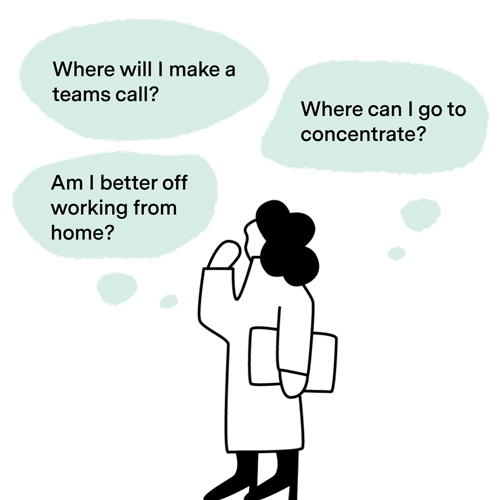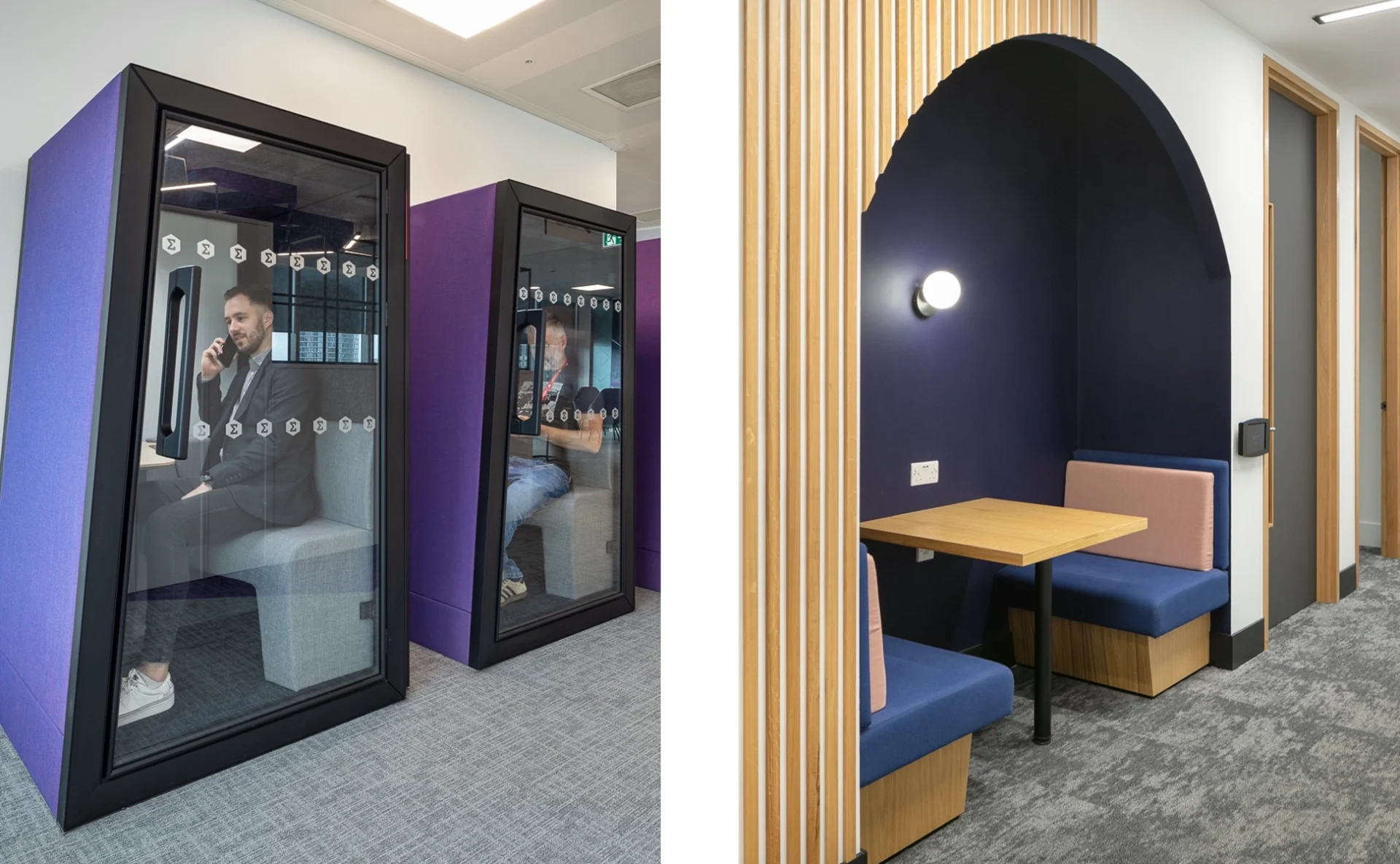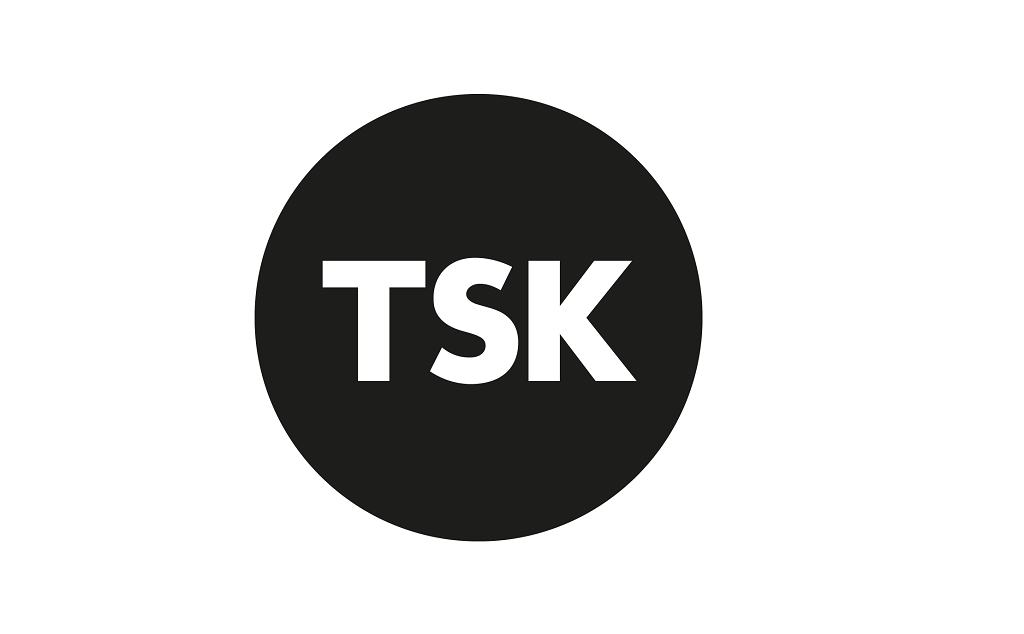Making sense(s) of the workplace: sound
Workspaces are hubs of energy, creativity, and productivity. But with that, comes the hustle and bustle of phone calls, conversations between teams, coffee machines, and keyboards continuously tapping. And while this commotion can often signal progress, it can also be a hindrance to the many employees who might struggle to focus in these loud environments.
In this article, we’ll look at workplace sound in more detail, providing tips to help you find harmony in your office space.

The office story so far
Open-plan offices emerged in the 1960s and became the standard by the late 2000s. At this point, businesses shifted towards fostering collaboration among colleagues, moving away from the traditional hierarchy of individual offices.
However, the landscape changed dramatically with the onset of the pandemic, reshaping employees’ connections with the office. Now, workplaces need to accommodate a dynamic and adaptable workforce that seamlessly ensures operational flexibility.
According to CIPD “more than ¾ of employers now offer hybrid working”, leaving organisations curious about how best to design their office space for the future.

The benefits of open-plan offices
Open-plan offices have been designed to:
- Bost colleague connections
- Make communication easier
- Provide motivation
- Aid natural collaboration
- Increase learning opportunities
However, not every individual experiences these benefits. While some may thrive in these interconnected spaces, others seek solace so they can complete their work in quiet.
The flip side
Conflicting needs can leave the open-plan set-up feeling somewhat insufficient when we consider the focused worker trying to concentrate in a room where important sales calls are taking place.
While it’s a good thing that open-plan workplaces are achieving what they set out to, employees must have an environment that supports them to be happy, healthy, and productive in their roles.

Disruption in the workplace
A University of California study noted it takes an average of 23 minutes and 15 seconds to regain concentration after a disruption.
Our audio environment can have a big impact on the way we work. Common challenges include:
- Finding a space to concentrate
- Making a Teams or call
- Private or personal conversations
- Interruptions by colleagues
Often these factors can lead employees to wonder if they are better off working from home. Most people will need privacy at some point during their working day be that for confidentiality, sensitivity or focus time.
Traditionally senior staff have been provided with cellular offices. Yet, these spaces are unavailable to everyone else. This privacy for ‘some not all’ culture can make it difficult for employees who also need peace and quiet to do their job.
Sound control

Throughout the pandemic, most of us transitioned to remote work as the new standard. Despite a lot of challenges, one big benefit was gaining better control over our environments, especially in managing noise levels.
Practically this has an advantage. Consider video calls, for example. Finding a quiet space for calls is crucial, a challenge that can go unmet in open-plan offices. But when working from home, this often isn’t the case.
According to workplace effectiveness measurement specialists – Leesman, only 30% of office occupants were happy with the noise levels in their 2023 workplace review.
Studies also show that noise can negatively affect memory retention, which is essential in most roles. This research also suggests that the louder the background noise, the more workers are required to increase their concentration, which can lead to negative effects on productivity and wellbeing.
Tuning in to different perceptions
While we can mostly agree on some universal noises that disrupt our flow, it’s important to remember that what might trigger one employee, may not always affect another. Some people may find that they can pop their headphones in and find their focus, while others may find music more distracting than the very noises they were trying to avoid.
With a diverse workforce, comes diverse needs (and that includes thinking about neurodiversity too). Neurodiverse individuals might differ in the things they need from an audio environment in comparison with neurotypical individuals.
What is the sound solution?
We don’t want to remove a workplace’s atmosphere or energy, and nor do we have to. But we do want to create environments where employees are comfortable, healthy, and productive.
Practical solutions can boost the quality and performance of your physical space, but the real indicator of success often lies in behavioural, cultural and personal factors, both individually—and as a collective.
Strategies for sound absorption
While homes naturally feature sound-absorbing elements like curtains, upholstery, carpets, and plants, modern offices often lean towards a sparser, more utilitarian design. The prevalence of hard surfaces such as desks, metal cabinets, glass partitions, and plastic computer equipment allows sound waves to travel freely across the space.
As we move into a new era of office design, sound-absorbent surfaces are finding their way into the workplace as we now understand their important role in audio harmony. From planting schemes to acoustic pods and high-backed sofas, the world of acoustics is evolving in the design field, allowing organisations to provide better workplace experiences.
The science behind the sounds
For those interested in how it works, here’s a glimpse…
Conventional absorbent materials fall into two categories: fibrous or open-cell foam. Sound waves force fibrous materials like cotton, jute, silk, wool, and linen to bend, which generates heat—the conversion of this acoustic energy into heat energy results in sound absorption.
Open-celled foam, found in seat cushions, upholstered furniture, and sound-absorption panels, allows sound waves to push air through narrow passages. This process results in the loss of sound energy, producing heat.
Office environments with hard surfaces can lead to sound issues like muffled speech and high-reverberation sounds. You’ll want to avoid this as much as possible, especially in meeting rooms and other areas designed specifically for conversation. These environments need a low reverberation time (≤1 second), prompting the use of more fibrous and/or open-cell foam materials.

Finding the right materials for your office
Absorbent materials are graded on a scale from A to E, where A signifies high absorbency and E signifies almost complete reflectivity. The absorption coefficient is determined by factors such as material consistency, thickness, and fibrosity.
When considering office design, it’s crucial to assess how sound will impact various zones within your workspace. Areas demanding more privacy, like meeting rooms, may require different setups in comparison with socially active spaces. These factors should guide the selection of materials tailored to the unique acoustic needs of each area in your office.
Is silence golden?
There seems to be a sweet spot when it comes to sound; we don’t want to eradicate it entirely. Many people will choose to put on the radio or music when carrying out a task. For most, an environment where you can hear a pin drop can also be just as disruptive and counterproductive.
Studies show that background noise levels of up to 45 dB are required to prevent loud conversations from disrupting productivity. But at 48 dB, background noise becomes an issue.

A change of tune
Certain workplace sounds can hinder the flow of productivity like sounds from the street, footsteps, loud conversations, and noisy printers. But some positive sounds can elevate our ability to concentrate and reduce stress.
A 2019 survey of 2,000 Britons found around half regularly listen to music while they work, with two-fifths believing it helps them get more done.
It depends on the individual in question, but many people retreat to busy coffee shops and put on their favourite playlists to get things done and in these contexts, sound becomes a help, rather than a hindrance.
We also want to consider here that for an office to attract staff to use it, it must have a draw, atmosphere, and energy that’s worth the commute. It’s all about balance, and this will be unique to each organisation.
Many companies choose to broadcast music across the entire workplace. With this in mind, looking at the research behind music and productivity can be helpful. Upbeat, complex music can help staff stay alert and motivated while performing repetitive tasks. However, lyrics can be distracting so it’s suggested that people avoid their sing-along favourites.

Office sound & neurodiversity
What is neurodiversity?
The range of differences in individual brain function and behavioural traits, regarded as part of normal variation in the human population (used especially in the context of autistic spectrum disorders).
People experience and interact with the world around them in different ways. Neurodiversity relates to differences in learning, attention, mood and other mental functions. ADHD, autism, dyspraxia, OCD and dyslexia are all examples of neurodiverse conditions.
The working environment—sights, smells, and sounds included—will impact your neurodiverse employees differently. The sounds a neurotypical person is comfortable with, may cause issues for someone with a neurodiverse perspective.
Understanding your employees as individuals with distinct audio needs is essential. Consider implementing:
- Quiet zones to prevent sensory overload and support solo-focused work
- Social and collaborative spaces for extroverted individuals
- Low-traffic areas to alleviate social anxiety
- Spaces with control over sound, light, and temperature
- A variety of soundscapes tailored to individual preferences
Finding the right volume
The rise of hybrid working has encouraged organisations to reconsider the role their office plays. Whether you’re adopting an officed-based or hybrid set-up, you must have a working environment that boosts motivation supports wellbeing and enhances productivity. Sound is a crucial ingredient in this cocktail.
Find our top 10 acoustic considerations below:
- Optimise space: Consider reducing the number of desks to improve acoustics.
- Background noise: Recognise the value of some ambient noise to facilitate conversation; aim for balance rather than complete silence.
- Individual Responsibility: Encourage employees to be mindful of their noise levels, fostering an understanding and considerate culture.
- Establish rules: Define specific spaces for particular activities to guide usage effectively.
- Personal choice: Acknowledge diverse work styles; allow individuals to choose between headphones or quiet spaces based on their preferences.
- Early design integration: Integrate acoustic considerations into the design process, investing in sound-soak materials over hard dividers.
- Diverse spaces: Provide semi-enclosed and enclosed settings for focused work or collaborative activities, such as sound-insulated phone booths and 1:1 spaces.
- Team gathering spaces: Offer alternatives for teams to gather and engage in collaborative activities with permission for a certain level of noise.
- Employee empowerment: Empower individuals to choose their workspace based on their activities and preferences.
- Remote work options: Ensure that working from home remains a viable option, recognising that it can be the best environment for concentration in some cases.
Learn more from the TSK team about workplace design here.
Selected industry experts bring you insight and expert advice, across a range of sectors.
Subscribe for free to receive our fortnightly round-up of property tips and expertise
Selected industry experts bring you insight and expert advice, across a range of sectors.
Subscribe for free to receive our fortnightly round-up of property tips and expertise



